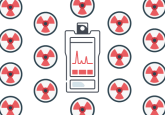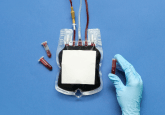Device could potentially reduce time and cost of drug development

Michael Moore and Lowry Curley (both Tulane University; LA, USA), have developed a technique that they hope will improve pharmaceutical drug development by providing a faster and more advanced alternative to animal testing.
Moore and Curley have developed a ‘nerve on a chip’ – a 3D model of nerve tissue approximately 1 millimeter in size. They aim to employ the nerve on a chip in the initial stages of testing the safety and side effects of new medications, potentially eliminating the need for expensive animal testing and prolonged drug development.
A new drugs interaction with the nerve on a chip would provide data to developers faster, resulting in less money being wasted on drugs that will never make it to the market. Moore commented: “In this country we spend billions of dollars developing drugs, the vast majority of which don’t ever become available to patients. We’re offering something that we hope will reduce the cost of this process.”
Moore and Curley hope that these potential savings would be passed on to people who purchase the prescription drugs that do win government approval. They also stated that their first round of research will focus on chemotherapies with reduced side effects.






